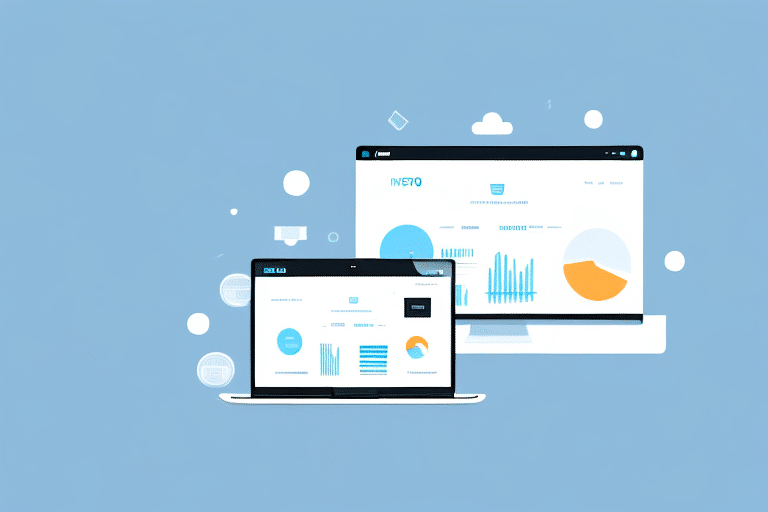Enhancing Business Performance with Financial Analysis and Planning (FAP) Analytics
Financial Analysis and Planning (FAP) is a cornerstone of effective business accounting. Taking FAP a step further, FAP Analytics empowers companies to extract profound insights from their financial data, enabling the optimization of financial performance, risk mitigation, and the identification of strategic improvement areas.
Understanding FAP Analytics and Its Significance
FAP Analytics leverages comprehensive financial data—from balance sheets and cash flow statements to income statements—to inform strategic decision-making. Tools like QuickBooks and Xero often generate this data, providing a solid foundation for in-depth financial analysis.
The significance of FAP Analytics cannot be overstated. It equips businesses to anticipate potential challenges, seize opportunities, and swiftly adapt to market fluctuations. By offering a precise depiction of financial health, FAP Analytics facilitates the evaluation of financial risks and opportunities, revealing trends, anomalies, and best practices that drive informed business decisions.
Key Benefits of FAP Analytics
- Enhanced financial decision-making accuracy
- Improved control over cash flow and expenditures
- Increased ability to identify and leverage growth opportunities
- Reduction of financial risks and uncertainties
- Accurate forecasting of future trends and swift adaptation to changing circumstances
Advantages of Integrating FAP Analytics into Your Business
Incorporating FAP Analytics into your business operations offers numerous advantages:
Optimizing Financial Performance
FAP Analytics enables continuous tracking of financial performance over time. By analyzing historical data, businesses can pinpoint areas of improvement and set realistic financial goals, measuring progress towards these objectives with greater precision.
Cost Reduction and Efficiency Enhancement
Through detailed financial data analysis, companies can identify areas of overspending and opportunities to utilize resources more effectively. This leads to cost reductions and increases overall business efficiency, enhancing competitiveness within the industry.
Data-Driven Customer Insights
Beyond internal financial metrics, FAP Analytics can analyze customer behavior, allowing businesses to tailor products and services to meet customer needs better. This results in higher customer satisfaction and loyalty, driving sustained business growth.
Selecting the Appropriate FAP Analytics Tool
Choosing the right FAP Analytics tool is pivotal for achieving desired outcomes. The ideal tool should be reliable, accurate, user-friendly, and capable of integrating data from multiple sources. Popular options include QuickBooks, Xero, and Microsoft Excel. The choice often depends on the business’s size, complexity, and budget.
Support and Training Availability
Consider the level of support and training each tool offers. Comprehensive training resources and customer support can significantly ease the implementation process and ensure effective utilization of the tool.
Scalability
As your business grows, so will your data needs. It’s crucial to select a tool that can scale alongside your business, accommodating increasing data volumes and evolving analytical requirements.
Implementing FAP Analytics into Your Business Workflow
Integrating FAP Analytics into your workflow is essential yet challenging. The key to successful implementation lies in a phased approach:
Start Small and Scale
Begin by identifying critical data sources and initiating data collection and analysis. Gradually incorporate additional data sources and refine analytical processes to build momentum and achieve comprehensive insights.
Stakeholder Involvement
Engage all relevant stakeholders, including IT departments, business leaders, and end-users, to ensure the analytics solution aligns with organizational needs and objectives.
Establish Clear Goals and Metrics
Define clear goals and measurable metrics for your analytics initiatives. This clarity enables effective tracking of implementation success and facilitates necessary adjustments.
Interpreting and Analyzing FAP Analytics Results
The true value of FAP Analytics lies in the ability to analyze and interpret data effectively:
Trend and Pattern Identification
Identify trends, patterns, and anomalies within your financial data to gain actionable insights into your business’s financial performance.
Benchmarking Against Industry Standards
Compare your analytics results with industry benchmarks to assess your organization’s performance relative to peers, identifying strengths and areas for improvement.
Root Cause Analysis
Conduct root cause analyses to uncover the underlying reasons behind identified trends or issues, enabling targeted solutions that enhance financial performance.
Avoiding Common Pitfalls in FAP Analytics
To maximize the benefits of FAP Analytics, businesses should avoid common mistakes:
- Insufficient data collection
- Infrequent data updates
- Utilizing unreliable or inaccurate financial software
- Lack of qualified personnel for data analysis
- Drawing premature conclusions without comprehensive data understanding
Additionally, setting clear goals and objectives for data analysis is crucial to prevent confusion and ensure that analytics efforts are aligned with business objectives.
Best Practices for Effective FAP Analytics
Adopting best practices can significantly enhance the effectiveness of FAP Analytics:
- Regularly collect and analyze financial data
- Invest in reliable and accurate financial software
- Employ a qualified team to handle data analysis
- Consider partnering with third-party FAP Analytics providers
- Utilize data visualization tools like charts and graphs for better data comprehension
Advanced Strategies to Leverage FAP Analytics for Business Growth
Advanced techniques can further enhance the value derived from FAP Analytics:
- Perform comparative analysis across different periods or business segments
- Implement predictive analytics to anticipate future trends and plan accordingly
- Conduct scenario analysis to determine optimal actions under various conditions
- Utilize industry benchmarking to measure performance against competitors
Additionally, creating interactive dashboards and reports using data visualization tools can facilitate the quick identification of trends and patterns, enabling informed decision-making and fostering collaboration among stakeholders.
Driving Informed Decisions and Growth with FAP Analytics
FAP Analytics empowers businesses to make informed decisions and drive growth by systematically tracking and analyzing key financial metrics. Regular data reviews help identify emerging trends and patterns, ensuring that strategic decisions are based on accurate and relevant data.
Ensuring data accuracy and relevance is paramount. By continuously refining metrics and focusing on those that align with business goals, companies can maximize the impact of their analytics efforts, fostering sustainable growth and competitive advantage.
Assessing the ROI of Your FAP Analytics Investment
Measuring the return on investment (ROI) of FAP Analytics is essential to validate the effectiveness of your analytics initiatives:
Cost-Benefit Analysis
Conduct a thorough cost-benefit analysis by comparing the expenses involved in implementing and maintaining FAP Analytics with the tangible benefits it delivers, such as increased revenue, reduced costs, and enhanced financial performance.
Long-Term Impact
Evaluate the long-term benefits by tracking ROI over an extended period. This approach provides a more comprehensive understanding of the investment’s impact, guiding future decisions regarding continued investment in FAP Analytics or other technological advancements.
Emerging Trends and Future Developments in FAP Analytics
The landscape of FAP Analytics is continually evolving, driven by technological advancements and innovative data analysis techniques:
Artificial Intelligence and Machine Learning
The integration of artificial intelligence (AI) and machine learning (ML) into FAP Analytics allows businesses to uncover complex patterns and trends within financial data that may be elusive to human analysts, providing a competitive edge in decision-making.
Real-Time Data Analysis
Advancements in cloud computing and data processing enable real-time financial data analysis, allowing businesses to make swift and accurate decisions. This capability is particularly vital for organizations operating in dynamic industries where timely decision-making is crucial.
By staying abreast of these trends and incorporating advanced techniques into their FAP Analytics strategies, businesses can maintain a competitive advantage and drive sustained growth.








